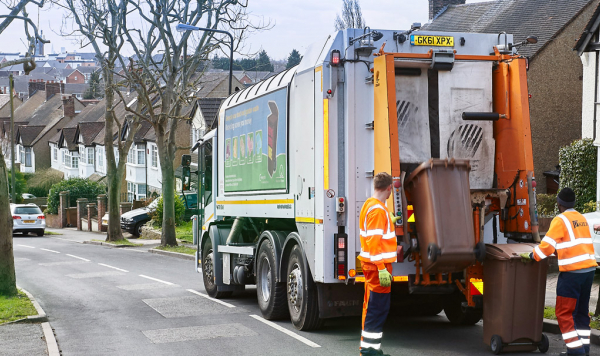Request
Dear Councillor,
NLWA meeting – Thursday, June 25th 2020 - Points for consideration
There can scarcely have been a time when decisions on major infrastructure fell against a background that is more troubled financially, environmentally and socially, and an outlook that is more opaque. Transparent, accurate information becomes more important than ever, as do individual responsibilities in making independent judgement about long term decisions and their consequences.
As Members of the NLWA, each of you individually carries responsibility for the proper administration of its financial affairs to ensure the economic, efficient and effective use of all resources. When making decisions on the EfW proposal, you should bear in mind
a) that, last November the Inspector refused to accept the NLWP waste forecasts, the same forecasts that underlay the EfW, and
b) that the proposal lacks two critical regional props – the evidential support of a waste plan (NLWP) and the strategic support of a Joint Waste Strategy (NLJWS).
We are making you aware of these issues prior to your decision making. Please note: Last November, the NLWP comprehensively failed its Examination in Public. The breadth and depth of problems in the NLWP, clarified in the single page commentary at the end of this letter, were such that the Inspector advised the Councils that he was unwilling to suggest modifications himself, and instead asked them to re-consider the whole plan. Any modifications put forward by the Councils would have to satisfy the Inspector before further consultation could proceed.
We draw your attention first to a practice which occurred some years ago at the beginning of the previous failed waste procurement, and which you should not allow to re-occur.
1. The absence of transparency of material facts risks influencing economic decisions.
The NLWA’s 2009/10 accounts revealed a commitment to an unnamed site for which a paid deposit of £1.208m was outlined. The Authority approved these draft accounts at its meeting of 30 June 2010, and signed them off at the meeting of 23 September 2010. Subsequent Authority accounts of 2010/11 revealed the full purchase price (an additional £11.62m making a total of £12.75m when Stamp Duty is included) and that the paid deposit represented (the common) 10% of completion price. The contracted liability, inherent in the 2009-10 Statement, represented roughly 20% of net assets and gross income. Yet The Statement made no mention of it as a NLWA liability, contingent or otherwise.
The purchase of the site in question, Pinkham Way, was a known material fact, about which the Authority accounts were absolutely required to be transparent, and to give a true and fair view of the present position and future affairs of the NLWA. Members will not wish such an egregious oversight of facts to reoccur.
2. Goodwill. On 22nd December 2009 the Authority purchased the remaining 50% of its joint venture in London Energy Limited. The resulting goodwill of £50.213m was capitalised and the 2009/10 accounts state that this sum would be written off via equal instalments over 20 years.
Almost ten years later, the latest publicly available audited statement (2018/19) indicates that no such write down has taken place. Goodwill of £50.213m remains on the balance sheet. Goodwill in a captive public sector market is unusual. Goodwill in any circumstances applying a decade post purchase is more so. Commercially, goodwill’s useful life would be capped at no more than five years and, in the interim, depreciated to nil on a systematic basis. It is open to question how the NLWA has actually been dealing with this legacy, why it failed to fulfil its 2009 / 10 undertaking and how it now intends to proceed.
3. Public Works Loan Board (PWLB) Loans. Members will notice a long-term debt of £60m in the balance sheet, repayable in tranches until 2028. This is related to the purchase of London Energy. In March 2010, the Authority announced that it had committed to buy the remaining 50% of London Energy (Previously LWL), with the intention of selling the company to the winning contractor of the waste procurement then in progress. It financed the purchase by a loan of £95m from PWLB, at fixed rates and with fixed repayment dates. The Authority knew at the time that repayment was 100% dependent on the procurement’s success, which was not a given. Yet neither the Risk Register nor the Notes to the Accounts made any reference to such a fundamental capital risk. It was only after local residents’ request for a Public Interest Report that the District Auditor included details. The subsequent failure of the procurement required the Authority to reschedule the loan. Members will notice in the 2018/19 Accounts that ‘' ... the interest rate payable [ie on the rescheduled debt] is higher than rates available for similar loans at the balance sheet date.'
The Authority was due to repay £20m to PWLB on April 12th 2020. Members should seek confirmation that it has made this repayment. If it has asked once again to reschedule this loan, it should give details of the terms, including any premium demanded. In light of the above, before agreeing to irreversible steps relating to the financing of the EfW, Members should satisfy themselves that all direct and related capital risks have been fully disclosed.
4. Valuation of the Pinkham Way site in the 2018/19 Accounts. The Savills valuation of the NLWA portion of the site in June 2018 (£14.1m or £3.4m per ha) is some 800% higher than Barnet Council’s valuation of the 1.8 ha contiguous portion that it retained in 2011 (£400,000 per ha). One or other (or neither) may be correct, but not both. Savills allows c £850,000 per ha for decontamination and site preparation costs. This contrasts with the Barnet April 2017 estimate for the whole of the Pinkham Way site of £46m, or c £7m per ha. In addition, Savills cited the site’s proposed allocation for waste use in the recent draft NLWP as supportive of their valuation. Last November, however, the NLWP comprehensively failed its Examination in Public and failed to justify the allocation, thereby removing one basis of Savills valuation. Whilst Savills refers to some planning issues, it avoids the central planning risk on the site, which NLWA itself has rated at the highest level in its own Risk Register, viz. that Pinkham Way is highly contentious, a fact reflected in the 10-year history of failure in attempts to allocate the site for waste. This sets Pinkham Way apart from the operating or permitted sites involved in the transactions cited by Savills as support for its valuation. All of these issues have clear implications for the assumptions on which Savills based its valuation.
5. Waste Forecasting found to have been inflated. Planning for the EfW at Edmonton, and thus for the DCO application, was based on forecasts of North London’s waste arisings. The same methodology was subsequently employed by the NLWP. At the November 2019 Examination in Public of the draft NLWP, the independent Inspector refused to accept this inflated level of forecasting. It is now open to question how the NLWA will deal with this material.
6. Recycling and Residual Waste. NLWA based its planning for the Edmonton EfW on a future recycling level of below 50%. London’s medium-term requirement is for this level to be at least 65%. Arup’s ‘Route to a Circular Economy’, prepared for the GLA, estimated that a moderate take-up would result in a 30% reduction in overall waste arisings. This would be most noticeable in residual waste. Meeting London’s recycling requirement in circumstances of reduced overall waste arisings would open up considerable risk in feedstock supply for the EfW. Over-estimating waste arisings would expose the Councils to inflated costs, since any 'Build and Operate' contract would surely involve obligations of Guaranteed Minimum Tonnage. How does the NLWA plan to deal with these clearly identified risks emerging post DCO?
7. Climate Emergency and CO2. Leading organisations (as well as nations) are rapidly changing their future business models and operating assumptions based on a climate stressed future; managing the changed and rapidly changing position strategically. The proposed EfW plant will input substantial levels of CO2. Over its expected life its accumulated gross output will be as much as two full years’ worth of London’s aggregate CO2. That constitutes a daunting prospect and legacy for members.
Despite such major changes to the operating environment it is not clear what, if any, adjustments the NLWA has decided upon to the plans for residual waste that it drew up in the previous decade.
8. Strategy and Planning. The Authority has previously stated that the NLJWS will be used to facilitate the procurement of new waste management services; that the NLWP is required to inform and be informed by the NLJWS; and that the NLJWS is a parallel document to, and inextricably linked to the NLWP. At this juncture there is no NLJWS beyond this year (2020), neither is there a NLWP.
Against this global and local uncertainty, members must now make their individual judgements. Members are reminded of the failure to pause and reflect on the earlier failed procurement, when the removal of PFI credits changed matters so fundamentally. Financially, that considerable price is still being paid.
9. Next Steps Objectively, which is now the more sensible course?
A. To press on regardless with a dated proposal, which has been overtaken by multiple crises beyond the NLWA’s control, and which lacks two essential regional props - evidential support from the NLWP and strategic support from a Joint Waste Strategy?
B. Or to pause, to take time to resolve the outstanding, interlinked threads highlighted by various groups including PWA (and, we would hope, by your own advisors), and to work together with stakeholders, including residents, to bring forward the integrated waste strategy and waste plan that North London requires?
With kind regards,
Chair – Pinkham Way Alliance
Response
|


